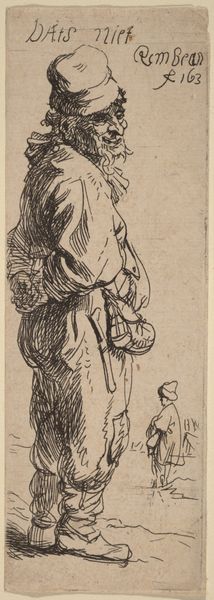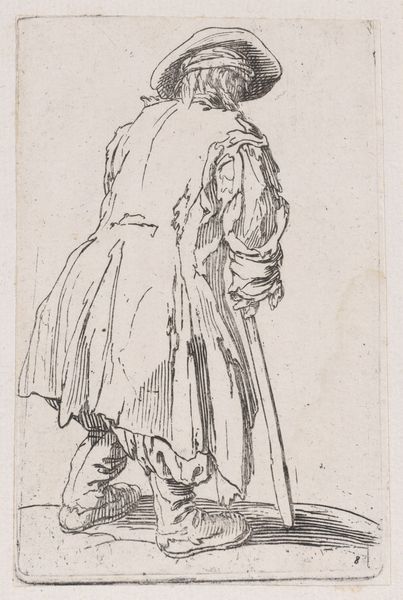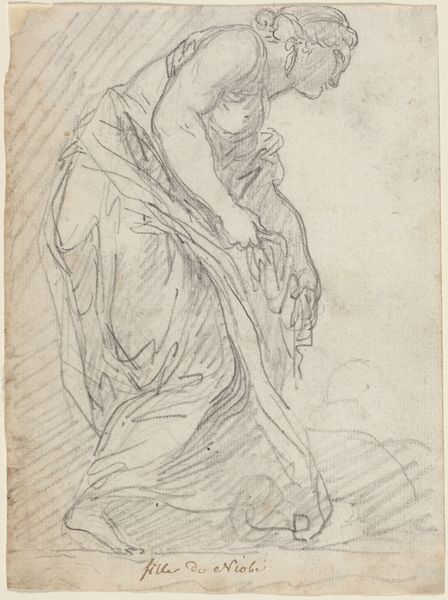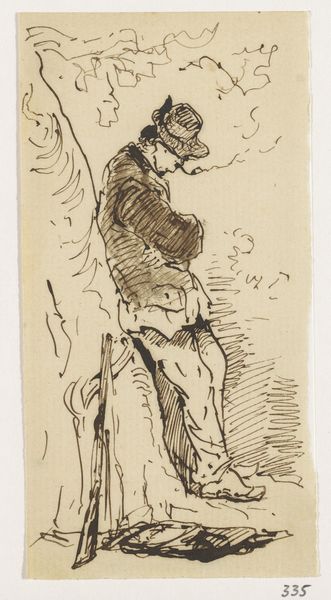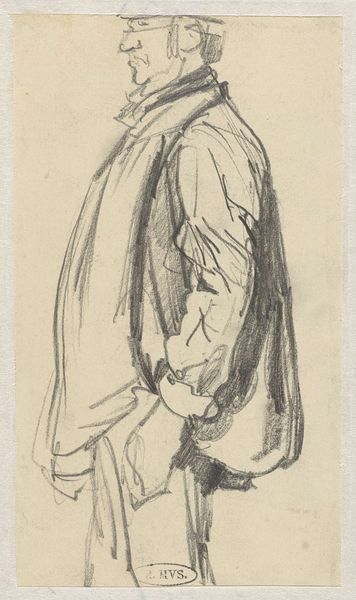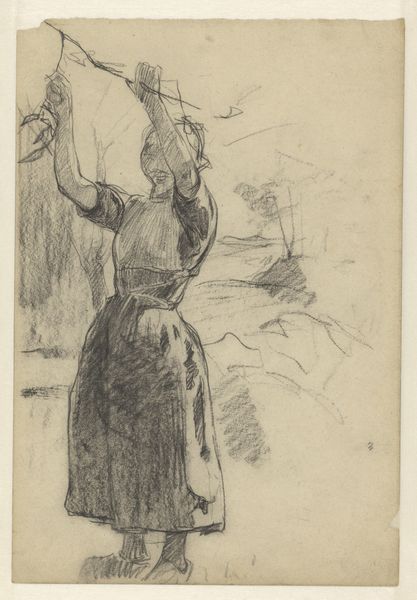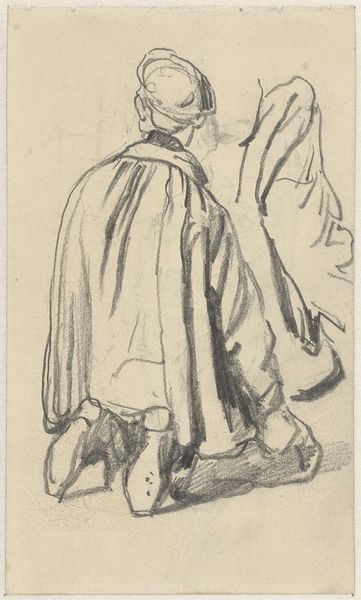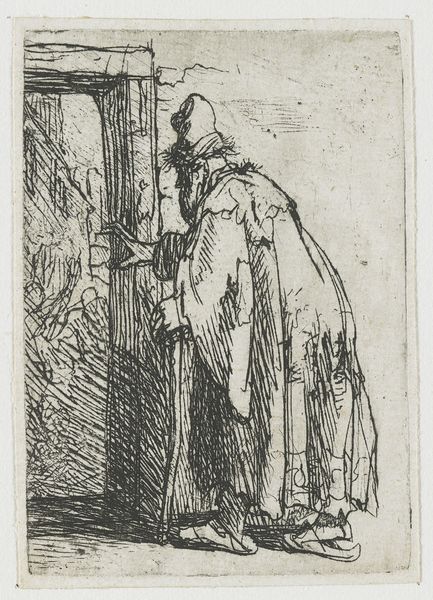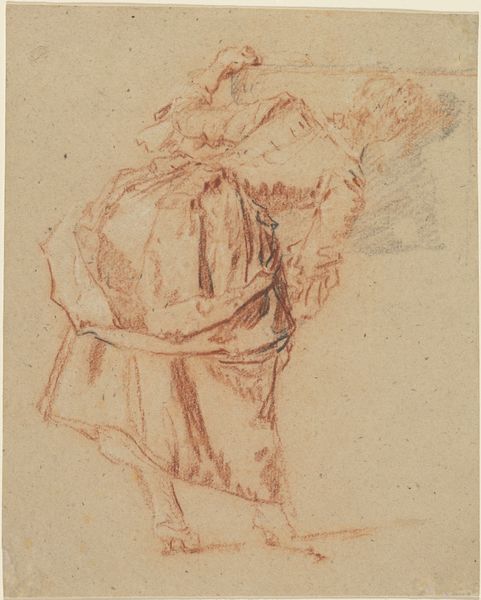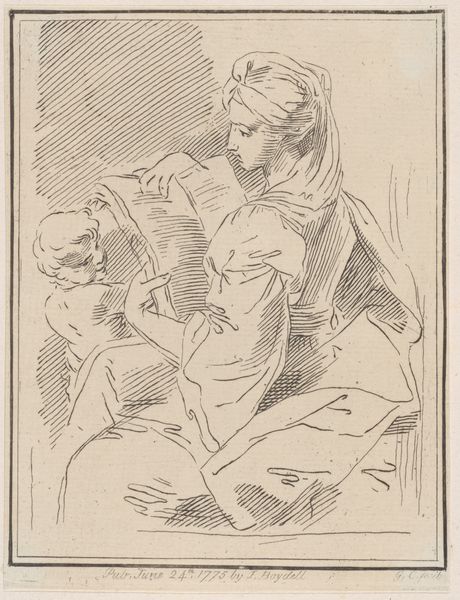
drawing, ink, indian-ink, pen
#
portrait
#
drawing
#
ink drawing
#
baroque
#
figuration
#
ink
#
ink drawing experimentation
#
indian-ink
#
pen-ink sketch
#
pen
#
history-painting
Copyright: Public Domain
Curator: I’m immediately drawn to the dramatic contrasts in this piece, the bold strokes of ink giving the figure such a sense of immediacy. Editor: Indeed, “Studie zu einem Kavalierbildnis,” or "Study for a Portrait of a Cavalier" by Anthony van Dyck, rendered with pen and Indian ink, speaks volumes through its economy of line. It resides in the Städel Museum’s collection. And I would describe its immediacy slightly differently, in a way that suggests how Van Dyck here is channeling both his status as a court artist with the demands and protocols of early modern representation as well as offering up an aesthetic study of maleness that is both potent and fragile. Curator: Fragile, yes, because of the open and somewhat unstable lines defining the man, even as his confident stance fills the composition. His psychological state, I sense, is complex. Consider the cascading drapery juxtaposed against the sharp angularity of his legs— Editor: –creating a powerful tension in the semiotics of pose and performance! This ‘cavalier’ simultaneously asserts and questions his authority. Is it the weight of expectation, of performative masculinity in service to aristocratic norms, that introduces this note of somber self-doubt? The image is especially potent if one considers Van Dyck’s relationships with female collectors and collaborators who themselves may have been probing the performance of gender and power. Curator: Interesting point. Now, regarding its formal qualities, notice how van Dyck manipulates positive and negative space, using voids strategically. Editor: Precisely, and those voids draw attention to the textures: the fur trim of his jacket, the meticulously rendered hose... all signifiers of status intricately woven into the representation of masculinity. One must also wonder: is it a portrait of confidence or self-conscious posturing? The gaze, while direct, possesses an element of uncertainty that disrupts straightforward interpretation. Curator: It certainly leaves a lasting impression. It reminds us how effective a medium simple ink can be. Editor: Agreed. In Van Dyck's sketch, one observes not merely technique but also the historical pressures—political and aesthetic—of a very specific moment being channeled into the artwork’s enduring visual force.
Comments
No comments
Be the first to comment and join the conversation on the ultimate creative platform.
